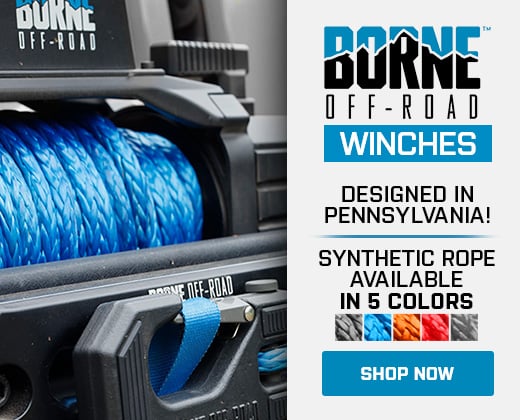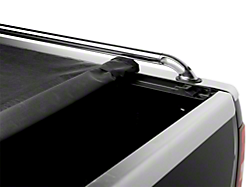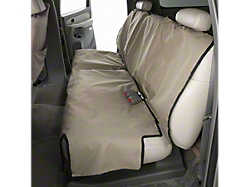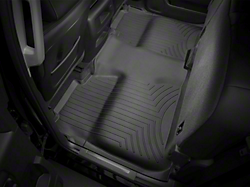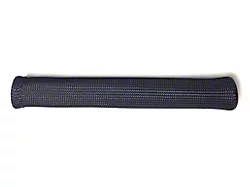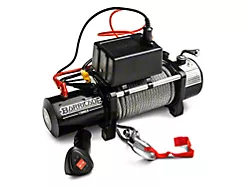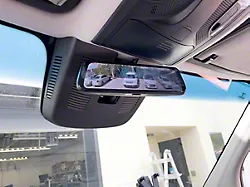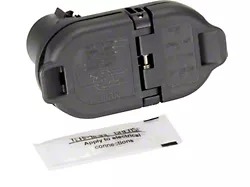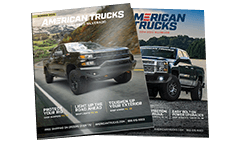Hydraulic vs. Electric Winches
There are two different winch motors available: hydraulic and electric. Both are equipped to get you out of a tough situation and save your rig, but there are a number of factors to consider when deciding which is best for your Sierra and the job.
Hydraulic winches are famous for using the duty cycle. Typically, tow trucks use hydraulic winches because they’re equipped to handle heavier payloads.
With a hydraulic winch, you can keep winching until your truck literally stops running. On the other hand, electric winches are by far the most popular option because they are cheaper, and there’s a greater selection.
Electric winches only require an electrical current to operate, which will most often be your Sierra’s battery hookup.
Electrical winches are susceptible to overheating and only provide about five minutes of powerful winching before you need to give them a break. For emergency and occasional winching though, both winching motors will get you out of the muck when called upon.
Understanding Electric Winches on your Sierra 1500
The market is saturated with electric winches because they are the most popular winches for off-roaders and casual drivers. You can find electric winches anywhere from $300 to $1000 depending on their capacity and added features.
Electric winches operate using an electric battery source to pull the cable. The motor turns the drum or spool by driving a planetary or worm gear.
There are two types of electric winches: permanent magnet motors and series wound motors. Both operate using magnets that alternate through different polarities via the rotor to charge the stator. Essentially, the rotor is an internal component of the motor that rotates the drum. The stator sits atop the exterior of the motor and doesn't move.
The biggest caveat of an electric motor is the strain it puts on the battery, so you’ll need to constantly monitor output from your battery and alternator.
Permanent Magnet Motors
Permanent magnet motors are the cheapest of the two options. They rely on heavy magnets within the motor to create torque to wind the cable. A permanent magnet motor can operate while the vehicle is off as long as there’s a charged battery in reserve.
For this reason, many off-roaders choose to purchase permanent magnet motors because they can be a lifesaver if you're ever in an accident where your vehicle can’t start.
Permanent magnet motors are also very popular because they are easy to install and incredibly lightweight. They also pull line incredibly fast, although they can drain your battery quickly if your vehicle is off. Beyond this, these motors are also susceptible to overheating after a few minutes of operation. These motors are only meant to handle light to medium-weight jobs.
Series Wound Motors
Series wound motors provide a middle ground between permanent magnet motors and hydraulic motors. While they consume more amperage than permanent magnet motors, they generate more torque from the same amount of current because of internal field coils.
They can also withstand impacts better than permanent magnet motors and won't fail in cold weather conditions. Between the two, permanent magnet motors are cheaper and easier to use, but series wound motors are also affordable and a lot more durable.
Powering an Electric Winch
Since electric winches are powered by your battery and alternator, an electric winch can cause crucial damage to internal truck components not equipped to power that amount of current. Ideally, you’ll want an alternator efficient enough on your GMC Sierra 1500 to handle and power huge amounts of electricity. A high powered alternator equipped to handle that ampere of electricity takes the stress off of your battery.
It’s important to note that continual electric winch use will put a strain on your battery, which is why it’s only recommended for occasional use. It’s also recommended you have a new battery capable of handling the strain of powering an electric winch so you don't end up being stuck with no power after pulling your Sierra out of the muck. A deep-cycle battery works great for winching if you don't start the vehicle.
Pros and Cons of an Electric Winch for your Sierra 1500
Pros:
- Greater selection
- Added features (remote control)
- Easy installation and maintenance
- Don’t require the engine to be operating
- Fast line speed
Cons:
- Can drain batteries within minutes
- Susceptible to overheating
- Permanent magnet motors are not impact resistant
- Huge strain on your alternator or electrical source
- Limited payload capacity
Ideally, electric winches only offer short bursts of recovery for a one to two minute period before cooling. This makes it ideal for off-roading, but for heavy-duty or continuous uses, you’re better off using a hydraulic winch.
Sierra 1500 Hydraulic Winches
Hydraulic winches are a bit more complicated to install and maintain, although they provide significantly more recovery power. A hydraulic winch runs off of hydraulic fluid that’s drawn from your power steering pump.
In order to install this, you must run high pressure lines all the way from your power steering pump into your winch. This will require several valves to regulate the system and may also require hydraulic solenoids. Ideally, I’d take it to a mechanic equipped to install a hydraulic winch system.
Hydraulic winches operate through a duty cycle meaning that they can operate all day without destroying your car battery or damaging your power steering. This makes them both equipped for heavy duty winching and fully submersible. While less common on the market, they are often used for commercial towing and winching operations. Perhaps the biggest drawback to hydraulic winching is that it requires the vehicle to be running to operate.
Pros and Cons of Hydraulic Winches
Pros:
- Capable of handling heavy payloads
- Impact and fatigue resistant
- 100% submersible
- Capable of continual daily use without strain on your Sierra
- Able to run all day
- Incredibly reliable and tough
Cons:
- Can't operate without the vehicle being on
- Very low selection
- More expensive than electric winches
- Slow line
- Difficult and potentially expensive installation
- Could impact steering abilities
Sierra 1500 Winching Capacity
Finding the right winch for your GMC Sierra will largely depend on its pulling capacity. This is important for selecting a mounting system as well, as you need to be able to support the weight of the vehicle you're going to recover.
Furthermore, the weight of your mounting system could also adversely affect the weight distribution of your vehicle. Without balancing the static weight, you could disrupt departure angles on your Sierra and limit your ground clearance.
Winch capacity will mainly determine how long and what weight you’re able to recover. Continuous use without proper capacity can greatly strain an electric winch and cause it to fold under pressure. You'll need to assess the weight of the vehicle versus the size of the winch.
Steel Cable vs. Synthetic Rope
Traditionally, many winches used steel rope because it was the strongest and most abundant of the two materials. Yet, synthetic winches are more popular with off-roaders because of their lightweight design. There are many pros and cons between synthetic and steel ropes. Ultimately, both are equipped to handle the strain of the vehicle being towed.
Steel Rope Pros
- Resistant to abrasions
- Lasts long if maintained
Steel Rope Cons
- Susceptible to corrosion
- Steel rope can fray, which is hazardous
- Incredibly dangerous if snapped
Synthetic Rope Pros
- Lightweight
- Less potential energy, making it slightly safer than steel in the event of a snap
- Stronger than steel rope
Synthetic Rope Cons
- Vulnerable to abrasions
- More expensive
Shop All Truck Winches & Accessories
Fitment Includes:
- 1999, 2000, 2001, 2002, 2003, 2004, 2005, 2006, 2007, 2008, 2009, 2010, 2011, 2012, 2013, 2014, 2015, 2016, 2017, 2018, 2019, 2020, 2021, 2022, 2023 and 2024 Sierras
- Base, C3, Classic, HT, Hybrid, Nevada Edition, SL, Z71, Denali, SLE, 1500, SLT and WT Sierras
- Engines: 4.3L Vortec V6, 4.8L Vortec V8, 5.3L Vortec V8, 5.3L Flex-Fuel Vortec V8, 5.3L Vortec V8 Hybrid, 6.0L Vortec V8, 6.2L VVT Vortec V8, 4.3L EcoTec3 V6, 5.3L EcoTec3 V8, 6.2L EcoTec3 V8 Sierras
*Please see Sierra parts pages for any exceptions.

